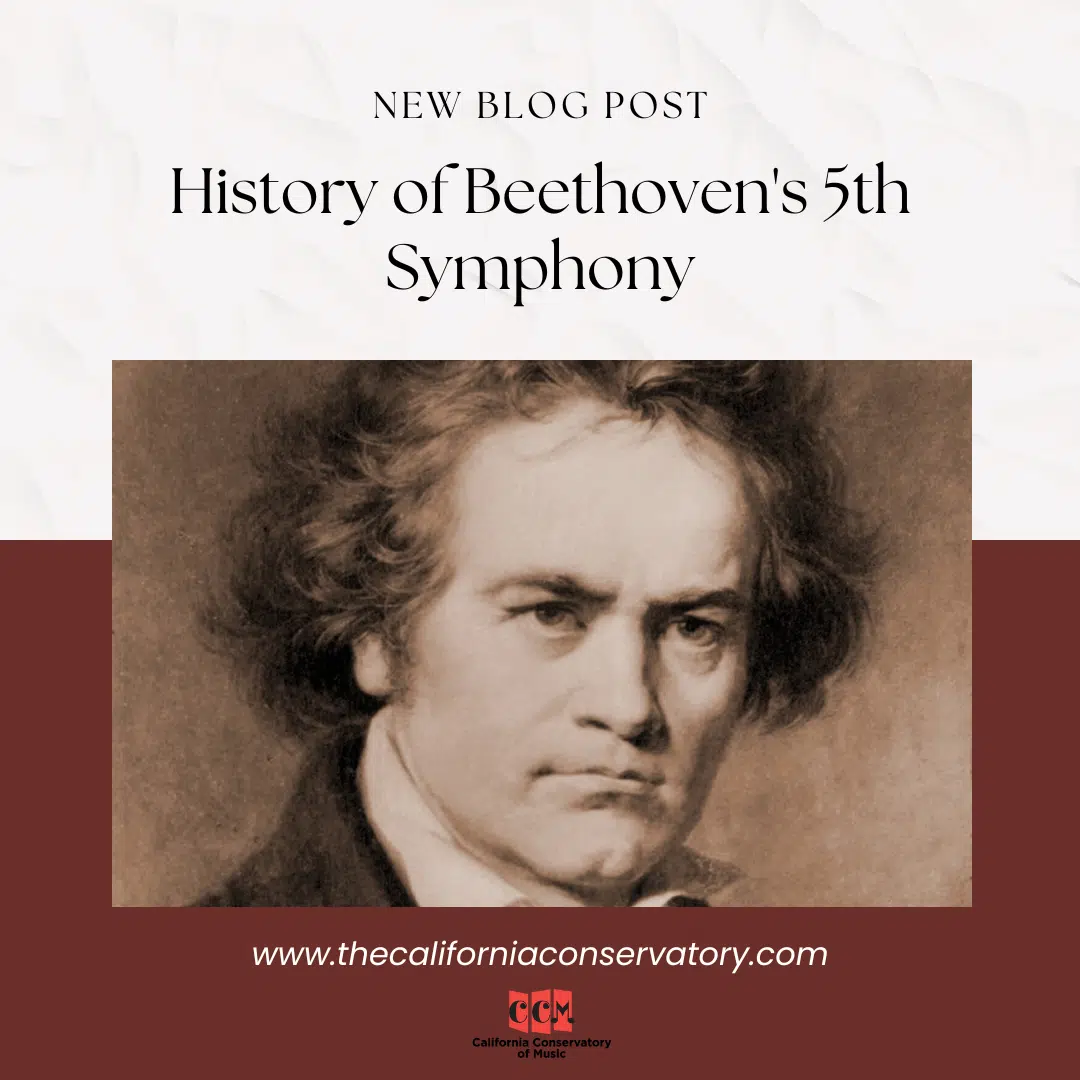November 15, 2022
History of Beethoven’s 5th Symphony

If you search for Beethoven on YouTube, we guarantee that the first result will be the 5th Symphony. This symphony is arguably the most famous in the world.
Even if you couldn’t identify it when you hear it, you’ve likely heard it before. The four-note motif that it opens with makes it instantly recognizable.
Of course, the question is,
“How did this symphony become one of the most popular symphonies of all time?”
Join us as we explore the history of Beethoven’s 5th Symphony.
The Beginnings of Greatness
When Beethoven started working on his 5th Symphony in 1804, he was already beginning to go deaf. During the time, he was working on a number of other projects. Overall, it took him four years to finish this masterpiece.
He also spent a good amount of time editing his work, which wasn’t normal for many composers at the time.
Many believe this symphony was his introduction to the Romantic era of composition, leaving the Classical era behind.
However, the 5th Symphony follows the four-movement structure that was popular in classical symphonies. The four notes define the first movement. After his death, his secretary described him as saying these first four notes were like “fate knocking at the door.”
Because of that story, many people refer to it as the “fate motif.”
This idea is supported by the fourth movement, which is an explosion of sound that draws inspiration from Claude Joseph Rouget de Lisle’s famous compositions. This French Revolutionary War Officer also wrote La Marseillaise, which would become France’s national anthem.
Performance of the 5th Symphony
Symphony No. 5 in C Minor made its debut at the Theater an der Wein on December 22, 1808, in Vienna. This was an infamous concert for Beethoven, as the conditions were horrible it lasted more than four hours. Beethoven conducted the entire orchestra, which was badly rehearsed.
They also ended up performing and debuting the Sixth Symphony during this concert as well, though they played it before the 5th.
Many considered this concert an absolute failure, as the musicians were not skilled enough to play the pieces, and the weather inside the hall was freezing.
Though it had an inauspicious start, the 5th Symphony quickly gained acclaim across the globe. Soon enough, it was performed at Carnegie Hall, as well as inaugural concerts for the National Symphony Orchestra and New York Philharmonic. To this day, it is one of the most popular pieces for inaugurating new music halls or orchestras.
E.T.A Hoffmann’s Involvement
E.T.A. Hoffmann was given a fair amount of credit for establishing the reputation for the symphony. In his 1813 critique of the work, he praised and complimented the piece, calling it a “rhapsody of genius.”
A few other music critics gave the work high praises as well. John Eliot Gardiner described the first four-note motif as a “call to arms, an incitement, an alarm call.” Hector Berlioz called the third movement similar to the “gaze of a mesmerizer.”
The opening four-note motif was a very crucial part of the passive resistance to the Nazi regime for the Europeans. Winston Churchill promoted a “V for Victory” campaign in Paris, encouraging BBC Radio listeners to stage a “quiet knocking” demonstration. They were instructed to use the four notes of the 5th Symphony for this demonstration, as the Roman numeral V stands for “5.”
Influencing Future Composers
The 5th Symphony became a cornerstone for future composers. Soon after its creation, it became a standard repertoire. The journey of light to dark and major to minor made it a model for composers to follow for many generations after.
Some examples of pieces that drew from the 5th Symphony include Mahler’s Fifth and Tchaikovsky’s Fourth.
What Is The 5th Symphony About?
It is said that Beethoven’s 5th Symphony is simply about triumph. It’s about every difficult victory that has ever been won or will ever be won. It is probably one of the reasons that the song has remained so popular throughout time. Over time, the song has become a symbol of so many things, so much so that we forget how many times it has been adapted for radio, television, film, and live performance.
It is also the reason why his work was included on The Golden Disc that NASA launched into space on the Voyager Spacecraft in 1977. Even extraterrestrial life will one day get to hear this ultimate form of creativity and expression.
